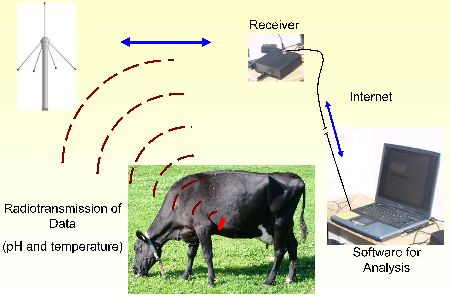As part of the PanSens III project, the system for intraruminal pH measurement is to be installed in at least 10 dairy herds. Data on feeding as well as performance and LKV data are collected from these farms. Since it is mainly cows that have problems with SARA in the starting phase of lactation, cows are equipped with the rumen sensor measuring system from calving onwards to ensure a representative sample. The results from these measurements are transmitted directly and wirelessly to a receiving station installed in the milking parlor and from there to an Internet server and are therefore always immediately and up-to-date available worldwide (which can also be used in presentations and lectures).
Goals of the project:
By evaluating, comparing and interpreting the collected data:
- the frequency of SARA at these establishments can be determined
- the relationships between milk performance data (fat; fat-protein ratio) are collected
- the practical applicability and feasibility of intraruminal pH measurement must be examined
- the benefit to the farmer can be determined







